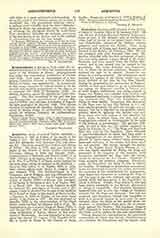

Acquapendente, a diocese in Italy under the immediate jurisdiction of the Holy See, comprising seven towns of the Province of Rome. Acquapendente was under the ecclesiastical jurisdiction of Orvieto until 1649. That year, in consequence of a conspiracy, Cristoforo Girarda, a Barnabite of Novara, Bishop of Castro, was assassinated. In punishment of this crime, Innocent X ordered Castro to be destroyed, and raised Acquapendente to the dignity of an episcopal city (Bull, September 13, 1649). Its bishops, however, retain the appellation “post Castrenses.” The first incumbent of the new See was the Hieronymite (il gerosolimitano) Pompeo Mignucci of Offida, who had been Archbishop of Ragusa. He took possession January 10, 1650. This diocese contains 13 parishes; 80 churches, chapels, and oratories; 47 secular clergy; 35 seminarians; 15 regular priests; 49 religious (women); 30 confraternities. Population, 19,350.
ERNESTO BUONAIUTI

